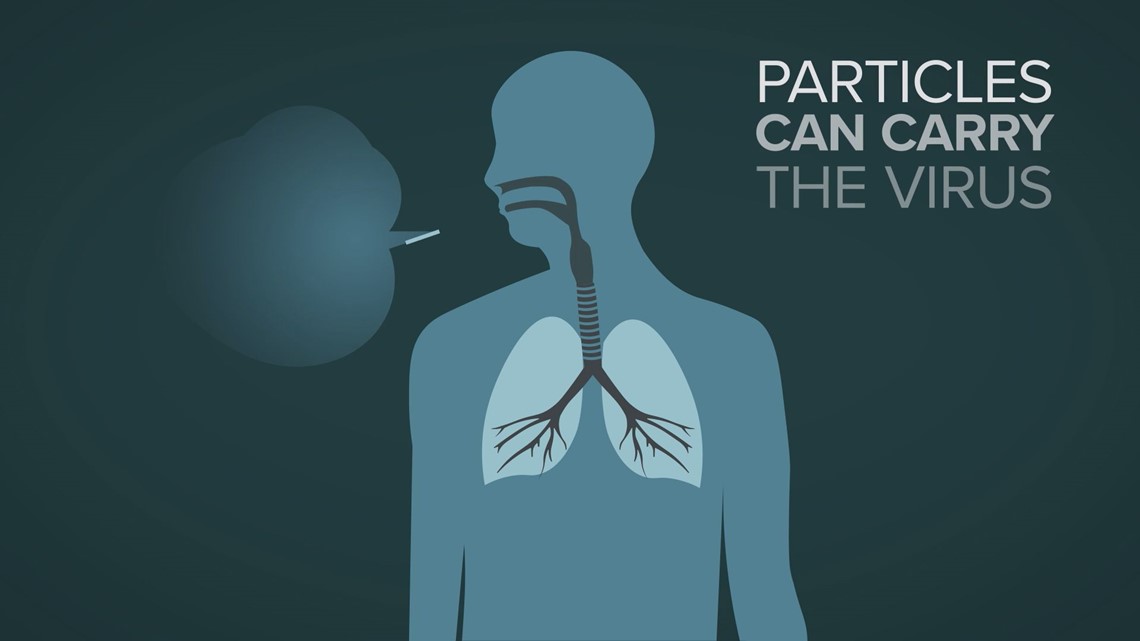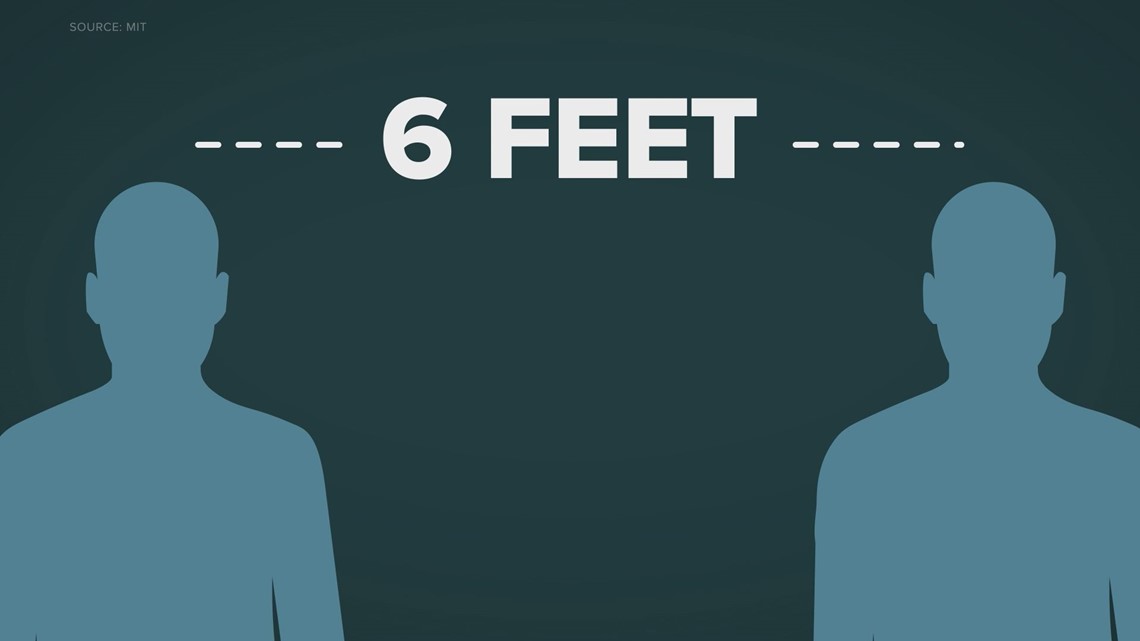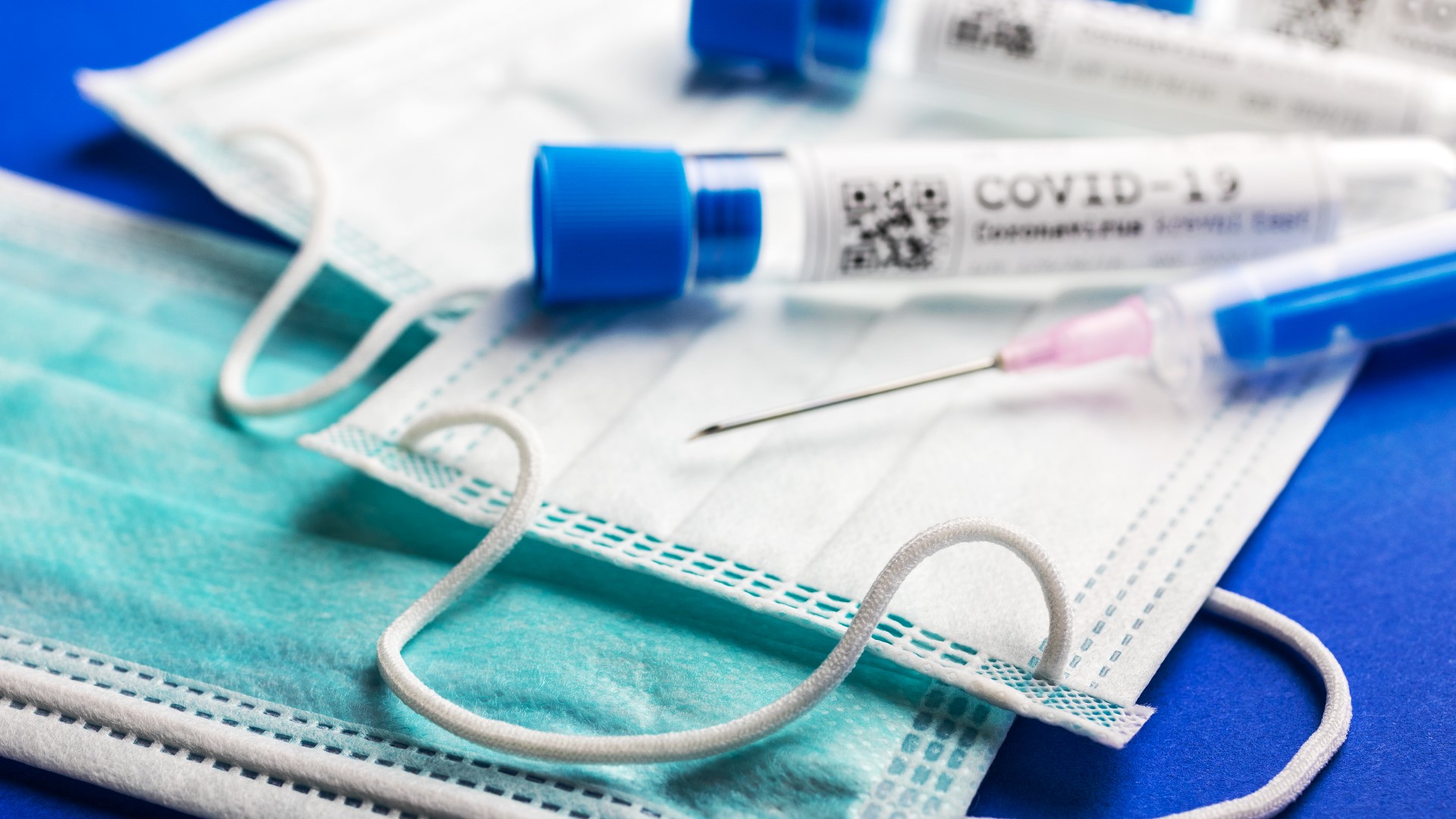TAMPA, Fla. — As things start to reopen, it can be tempting to be near each other again but you still want to be careful.
Health experts agree the easiest way for the coronavirus to spread isn't necessarily from touching something but being too close to someone who has it.
You can catch COVID-19 coronavirus from a contaminated surface or from being close to another person. But public health experts worry about one more than than the other. Person-to-person contact spreads the virus more easily and it's harder to prevent.
Both of these risks start at the same place, inside the nose of an infected person. The virus tricks the human body into making new copies of itself and those copies catch a ride out in tiny particles in the breath. Just calmly breathing or talking this person emits particles that can carry the virus.
You've seen these if you've ever breathed onto a cold window.


If we zoom in on the kind of droplet that can come out of this person's mouth, you'd find a bunch of copies of the virus floating inside. The amount of viral particles in droplets is called the "viral load." The more virus that gets into your body the more likely it is to infect you. Contaminated droplets like this one can scatter all over the place.
But for you to get infected from touching that a lot of stuff has to go wrong.
You'd have to touch it soon enough that the virus hasn't died, which can be hours or as much as a few days depending on the surface. Then you'd have to touch your own face somewhere and let those copies of the virus in but you also have a second chance to wash with soap or sanitize before that happens.
With person-to-person spread though there are no second chances. If droplets come out and you're close enough they get in that's the ballgame. Most health experts think you should give people at least 6 feet. More is better because sneezes and coughs can shoot droplets much farther than that.


You can also help nip this risk by leaving your house prepared. Face coverings can trap your droplets so they don't reach other people.
What other people are reading right now:
- Here's what's opening in Tampa Bay
- Unemployed Floridians required to resume making biweekly benefits requests
- Barbershops, nail and hair salons will reopen May 11 in Florida
- Florida could move into Phase 2 in a few weeks if data supports it
- Here's how to celebrate a socially distant Mother's Day
- It's Hurricane Preparedness Week: Are you ready for this season?
- Wednesday is your last chance to submit your direct deposit info for a stimulus check
- Coronavirus in context: Florida COVID-19 cases explained in 5 charts
►Stay In the Know! Sign up now for the Brightside Blend Newsletter



